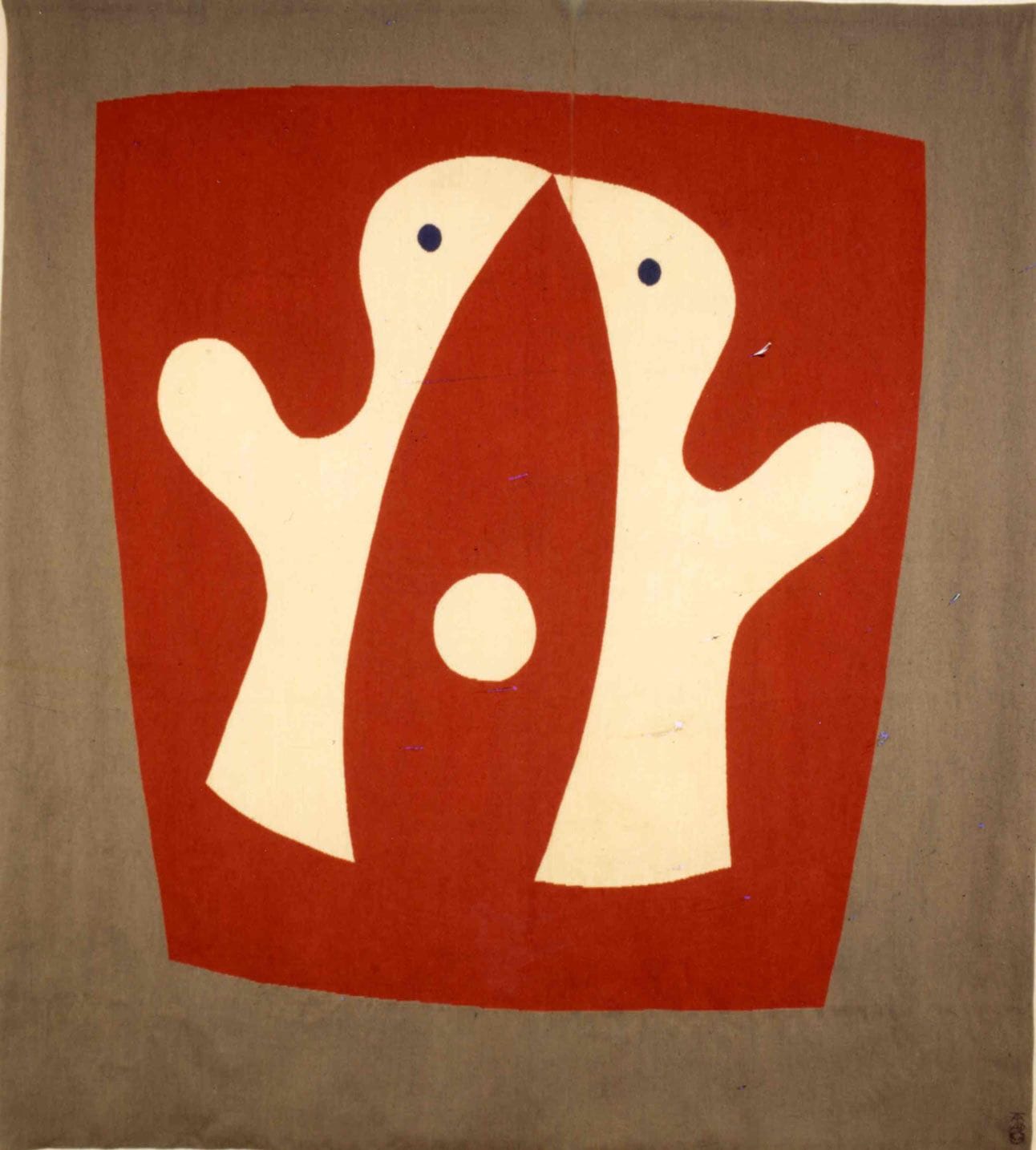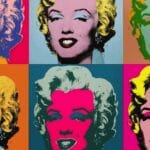Hey there, art enthusiasts! Ever wonder how a crumpled piece of paper could become a work of art? Or how embracing the unexpected could revolutionize an entire artistic movement? Enter Jean Arp, a pioneer of Dadaism and a master of biomorphic abstraction. His journey, from the rebellious Dada days in Zurich to the dreamlike landscapes of Surrealism, is a testament to the power of chance, the beauty of nature, and the boundless possibilities of artistic expression. Join us as we explore the life and art of Jean Arp, a man who dared to redefine what art could be. If you are interested to know what definir gomenasai stands for, this article will break it down for you. And while you’re here, make sure to check out our article on gdp e242 as well.
Arp’s Dada Revolution: Embracing Chance
Born Hans Peter Wilhelm Arp in 1886 in Strasbourg, Alsace-Lorraine (then part of Germany), Arp adopted the name “Jean” as he navigated his dual French-German identity. This cross-cultural upbringing likely played a role in shaping his artistic vision, allowing him to flow between languages and artistic styles with remarkable ease. He wasn’t just in the Dada movement; he was a vital part of its creation, challenging artistic conventions alongside other Zurich-based rebels like Tristan Tzara and Hugo Ball. Imagine a world consumed by war, where traditional values seemed to have crumbled. Dadaism, born from this chaos, became a platform for artistic revolt. Arp, with his playful experiments in chance operations, embodied this spirit perfectly. Works like “Collage with Squares Arranged According to the Laws of Chance” (ca. 1917) demonstrate his radical approach: cutting up shapes, scattering them, and gluing them down wherever they landed. This wasn’t about creating aesthetically pleasing compositions; it was about challenging the very notion of artistic control, celebrating the beauty of the unpredictable. Some might dismiss it as a game, but for Arp, it was a profound exploration of the creative process, a way to liberate art from the constraints of intentionality.
From Dada to Dreams: Arp’s Surrealist Phase
As Dadaism began to wane, Arp’s artistic journey took a fascinating turn towards Surrealism. While still captivated by the organic, biomorphic forms that defined his earlier work, he began to infuse them with a dreamlike, subconscious quality. This transition may have been influenced by collaborations with Surrealist figures like André Breton, exposing Arp to new avenues of psychological and artistic exploration. Now, instead of chance dictating his creations, it was the mysterious world of dreams and the subconscious that fueled his art. Think melting clocks and bizarre juxtapositions – that’s the realm of Surrealism, a movement that sought to unlock the hidden landscapes of the mind. Arp’s work during this period suggests a deeper engagement with the inner world, exploring the symbolic language of dreams and the fluidity of identity.
The Master of Biomorphic Abstraction
Arp’s ongoing fascination with nature’s forms culminated in his mastery of biomorphic abstraction. He wasn’t interested in creating realistic depictions of plants or animals; rather, he sought to capture their inherent life force, their organic essence. In sculptures like “Torso with Buds” and reliefs like “Growth,” simple shapes transform into evocative forms that seem to pulse and evolve before our eyes. These works, while abstract, resonate with a deep familiarity, mirroring the natural world in ways that tap into our own biological rhythms. They invite us to contemplate the interconnectedness of life, the constant cycle of growth and decay, and the beauty of organic forms. He even extended this biomorphic language to tapestries, weaving intricate abstract designs that brought his organic forms into the realm of textiles, demonstrating the versatility of his artistic vision.
Arp’s Enduring Legacy: Shaping Modern Art
Jean Arp’s impact on art history extends far beyond his Dadaist beginnings. His playful experimentation with chance, his embrace of biomorphic abstraction, and his exploration of the subconscious had a profound influence on subsequent generations of artists. Abstract Expressionism, for example, likely drew inspiration from Arp’s pioneering spirit, acknowledging the potential of abstraction to express complex emotions and ideas. Ongoing research continues to uncover the connections between Arp’s work and other artists of his time, suggesting that his influence may be even more widespread than currently understood. While we can trace his impact on specific movements, his true legacy lies in his enduring reminder that art can be a journey of discovery, a celebration of the unexpected, and a profound reflection of the natural world.
Who Was Jean Arp, the Dada Pioneer?
Jean Arp (born Hans Peter Wilhelm Arp, 1886-1966), a key figure in the Dada movement, wasn’t just a participant; he was a co-founder, shaping its rebellious character from its inception in Zurich during World War I. He collaborated with other radical artists like Tristan Tzara and Hugo Ball, rejecting traditional art forms and embracing chance and spontaneity. A truly multi-disciplinary artist, Arp expressed himself through sculpture, painting, collage, poetry, and even tapestry. His work often incorporates biomorphic forms, echoing the shapes and rhythms of the natural world.
Arp’s Art Forms
| Art Form | Description |
|---|---|
| Sculpture | Three-dimensional biomorphic forms, often resembling natural objects. |
| Painting | Organic abstractions and biomorphic shapes, often with a dreamlike quality. |
| Collage | Assemblages of various materials, sometimes arranged using chance operations. |
| Poetry | Experimental verse, often reflecting Dadaist and Surrealist themes. |
| Tapestry | Woven textiles featuring abstract designs, often incorporating biomorphic forms. |
Arp’s legacy stretches beyond Dadaism, influencing Surrealism and Abstract Expressionism, solidifying his position as a significant figure in modern art history.
The Birth of Dada: A Collaborative Rebellion
Dadaism wasn’t the brainchild of a single artist but a collective eruption of creative minds in Zurich during the turmoil of World War I. At its heart was the Cabaret Voltaire, established in 1916 by Hugo Ball and Emmy Hennings. This hub of artistic experimentation became the birthplace of Dadaism, fostering collaborations between artists, writers, and performers who rejected the logic of war and embraced absurdity as a form of protest.
Key Figures in Dada’s Genesis
| Co-founder | Contribution |
|---|---|
| Hugo Ball | Founded Cabaret Voltaire, key writer and performer |
| Emmy Hennings | Co-founder of Cabaret Voltaire, performer |
| Jean (Hans) Arp | Artist, explored chance and collage |
| Richard Huelsenbeck | Poet, writer, key theorist of Dada |
| Tristan Tzara | Poet, writer, central figure in Dada’s spread |
| Marcel Janco | Artist, architect, contributed to performances |
Dada’s influence quickly spread to other European cities and even reached New York, with artists like Max Ernst and Johannes Baargeld establishing Dada circles. It’s important to note that the history of Dadaism is complex and still being researched. Ongoing scholarly work focuses on aspects such as the exact relationships within the Zurich group, pre-war influences, and individual motivations.
Who is the Father of Dadaism? Exploring the Complexity
Pinpointing the “father” of Dadaism is like trying to identify the sole creator of rock and roll: it was a collaborative explosion, a confluence of influences and personalities. While Jean Arp is a central figure, associating a single “father” with Dadaism might oversimplify a movement built on collective action and shared disillusionment with the established order.
During World War I, Zurich became a haven for artists and intellectuals seeking refuge. Their shared frustration with traditional art and thinking, seen as contributing to the war’s horrors, ignited a desire for radical change. The Cabaret Voltaire, founded by Hugo Ball and Emmy Hennings, became the crucible for this artistic ferment. Within its walls, figures like Arp, Tristan Tzara, Richard Huelsenbeck, and Marcel Janco, fueled by shared discontent and creative energy, gave birth to Dadaism. They collectively challenged artistic conventions, embracing chance, absurdity, and techniques like collage and sound poetry.
Dadaism’s ripple effect extended to later movements, including Surrealism, laying the groundwork for artistic explorations of the subconscious and the irrational. Ongoing research continually refines our understanding of Dadaism, emphasizing the nuanced and collaborative nature of its origins and its vast impact on subsequent artistic thought.
- Unlock Water’s Symbolism: A Cross-Cultural Exploration - April 20, 2025
- Identify Black and White Snakes: Venomous or Harmless? - April 20, 2025
- Unlocking Potential: Origins High School’s NYC Story - April 20, 2025















